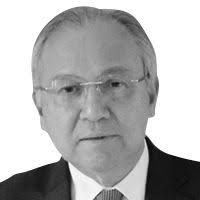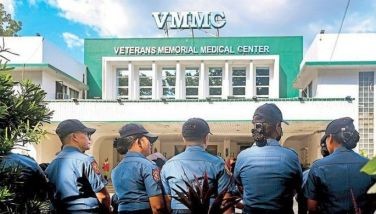New presidential aircraft: It’s about time

As always, the usual suspects who are criticizing the government’s purchase of a Gulfstream G280 as being unnecessary miss the whole point. As the chief executive, the president – whoever he may be – should be able to travel anywhere in the 7,600-plus islands in this country or abroad in an aircraft first and foremost for security reasons. Secondly, that aircraft should be airworthy.
People should look back to March 17, 1957 – the day when the “champion of the masses,” President Ramon Magsaysay, perished because the Douglas C-47 airplane he was riding in crashed at Mt. Manunggal in Cebu. Also killed were 25 other passengers that included several high-ranking government officials, a senator and a congressman, the commanding general of the Philippine Air Force, the Secretary of Education as well as journalists, with Philippine Herald reporter Nestor Mata as the lone survivor. Investigation ruled the cause as “metal fatigue” or the weakening of material mostly because it carries a load above its threshold. The newly reconditioned C-47 was not at all suitable for presidential air transport since it was designed to be more of a supply and cargo plane.
For almost four decades, the Fokker F-28 acquired during the time of Ferdinand Marcos served as the presidential plane – but suitable only for domestic trips. Not surprisingly, Mrs. Cory Aquino had a hard time traveling around the country in the old aircraft.
Considering its age, the reliability of the F-28 had become “increasingly doubtful” as President Duterte himself described it. Nowadays, if a number of our wealthy businessmen and politicians can travel around the country in their own aircraft to do business activities or go back and forth from their provinces, why not the president of our country?
I strongly believe in mobility and security for the president. In fact, I urged former presidents Joseph Estrada and Gloria Arroyo to look into purchasing a presidential plane. For some reason, they never got around to it. They resorted to either borrowing aircraft from businessmen or chartering flights from PAL.
It actually is false economy for a president to be borrowing planes from friends (which can give rise to suspicions of corruption) or chartering flights which in the long run will prove to be more expensive. And while President Duterte preferred to take commercial flights, it was not only difficult but proved to be almost impossible – to fully secure the President. In the end, it became even more expensive and impractical, not to mention increasingly inconvenient for the public traveling on the same commercial flight with the president.
It is high time the president had his own aircraft that can be used at short notice to travel from one destination to another especially when there is an emergency or a crisis that requires his immediate presence. As explained by DND officials, the American-made G280 can also serve as a command and control center, much like an airborne command post with conference tables as well as communications equipment such as a satellite phone. It can fly non-stop for eight hours, it can land on short runways and is definitely faster than the F-28, and ultimately practical.
Besides, the G280 will also be used by senior government and military officials. After all, the president has been known to be practical, allowing the presidential aircraft to be used for other missions like the time when he took several wounded soldiers during the Marawi siege with him aboard the presidential plane.
Not for anything but even the president of Uganda – which is one of the poorest nations in the world – has his own aircraft, a Gulfstream G550 which has been in use since 2009 and replaced a Gulfstream IV-SP that has been in service since 2000.
Critics may fulminate about the cost of acquiring a new G280 which is estimated at $34 million, but this is minuscule considering its necessity, especially since along with it is the kind of security that commercial, chartered or borrowed planes will not be able to provide the president whenever he travels.
As chief executive and commander-in-chief, a president represents his country whenever he travels abroad. His aircraft is a symbol of his power and authority – just like Air Force One which is “one of the most recognizable symbols of the (US) presidency, spawning countless references not just in American culture but across the world. Emblazoned with the words ‘United States of America,’ the American flag, and the Seal of the President of the United States, it is an undeniable presence wherever it flies,” so goes the description of the aircraft used by the most powerful man in the world.
Our sources tell us, the cost of operating Air Force One is anywhere from $180,000 to $200,000 per flight hour. That does not even include the cost of transporting the presidential limousine (also known as “Cadillac One” or “The Beast”) which can come in pairs to transport the president after he disembarks from Air Force One. According to a report from the US Government Accountability Office, these vehicles are typically transported in a Lockheed C-5 Galaxy plane with a cost per flight hour of over $100,000.
The cost incurred whenever the president of the United States travels to another country may include hundreds of secret service agents and other personnel including White House staffers. A personal friend of mine who was with President George W. Bush when he came to Manila in 2003 told me – it cost the American taxpayer $20 million for the eight-hour stay.
* * *
Email: [email protected]
- Latest
- Trending






























